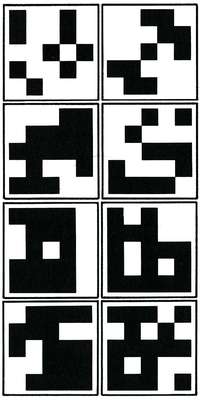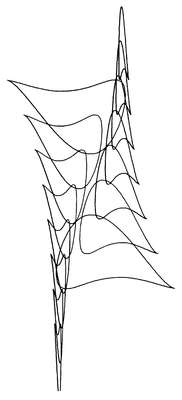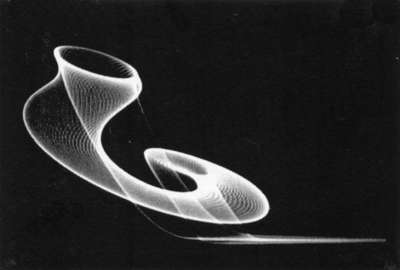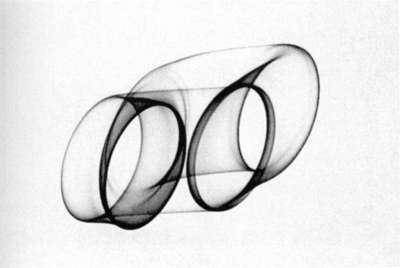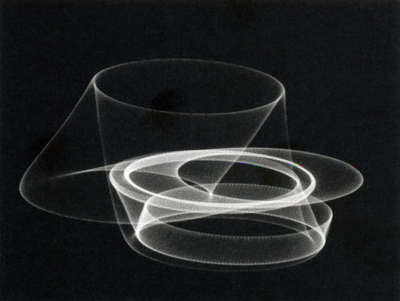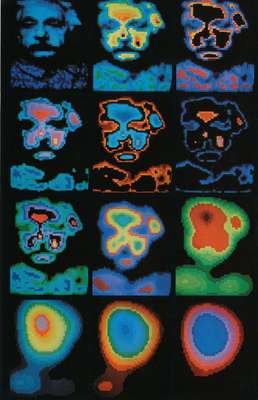Herbert W. Franke was a physicist, science fiction writer, artist, curator, author of theoretical books and essays, and speleologist (cave researcher). In one word: He was a Renaissance man. Of particular interest in our current context of digital or algorithmic art, are his contributions to this field. As one of the very first, he started this stream of work in the mid-1950s when he used an oscilloscope and a camera to generate patterns of arrangements of continuous lines (“analog” graphics). He first exhibited these in 1956, only a few years after Ben F. Laposky had in the USA done experiments of similar kind.
Soon after first algorithmically generated graphics had been exhibited in galleries in Stuttgart and New York (in 1965), Franke became interested in digital technology. He published the first comprehensive history of computer art in 1971 (under the title »Computergrafik – Computerkunst«. München: Bruckmann, later by Springer Verlag; there is also an English translation). Franke has written innumerable essays on computer art and related subjects. He has organized numerous exhibitions, and lectured worldwide on the subject. Since the early 1970s, he has contributed a comprehensive work of digital art. Some of his programs were written in collaboration with other authors.
Franke’s oeuvre finds its place in the cross-over of scientific and artistic methods. His two large collections of works of computer art found a new and permanent home at Kunsthalle Bremen.
He liked to call himself the “Dinosaur of computer art”. In a way, he was, when we neglect the difference of analogue and digital computer equipment. The interesting fact here is that Franke did his first images by photographing drawings of curves from the screen of an oscilloscope, i.e. an analogue device. This kind of device had no chance display anything different. Therefore, there was a jump in thinking from analogue to digital drawing.






